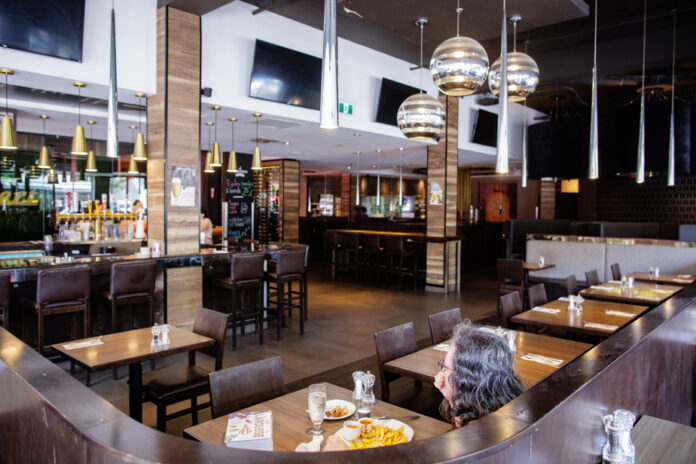Prices are rising everywhere, and restaurant menus are no exception. Customers, having trouble digesting these salty bills, are starting to desert the dining rooms, note some restaurateurs, who are apprehensive about the coming autumn.
In this context, lunch establishments are full of customers. Some seem to have decided to swap dinner at the restaurant for a “two eggs bacon” style meal, which is often less expensive.
“We always wonder how far we can stretch the elastic,” admits Martin Vézina, vice-president, public affairs, at the Association Restauration Québec (ARQ).
According to him, restaurateurs have their hands tied at the moment. “If we raise our prices too much, customers won’t come. If we don’t raise salaries, we won’t have any staff. How can we do that? “, he asks.
“It’s hard to quantify precisely. But yes, we can say that we see a difference in customer traffic,” adds Richard Scofield, President and CEO of Groupe St-Hubert.
“Yes, we are concerned about that,” he adds. You hear what people are saying [about prices]. »
And consumers weren’t dreaming. Eating in restaurants is more expensive than before. In 2022, 47.4% of restaurateurs increased the prices on their menu by at least 6% to 10%. This year, more than half (56.8%) intend to raise them by 6% to 10%, according to data collected by the ARQ. For example, the Thai Grilled Beef Salad served at ZIBO! cost $22 in 2019, dropping to $27 last year. And today, customers who order it have to pay $28. At La Cage–Brasserie sportive, the signature burger (Blitz burger) went from $16.75 (November 2018) to $19.75 last year to finally be displayed on the menu at $20 this year. To add weight to the bill, in many restaurants, the price of a glass of wine exceeds that of a bottle purchased at the SAQ.
Although these increases are justified, according to restaurateurs, because of the increase in food prices and wages, some consumers have simply chosen to eat at home instead of buying a meal outside.
“There are people who stop going to restaurants and it’s worrying,” confirms Mr. Scofield.
With ridership fairly stable over the past year – though never returning to pre-pandemic levels – Benjamin Chèvrefils, Vice-President and General Manager of Groupe ZIBO!, expects the inevitable: the number of customers will table at ZIBO restaurants! and Vertigo – two brands managed by the group – will decrease over the next few months.
“It’s definitely going to tend towards that.” It will happen eventually. It was always the fear, he admits. Going to a restaurant is not an essential expense. »
“We also agree that no one is going to lower their prices,” he said. The danger of constantly climbing is that you become less and less competitive. »
It’s not just the channels that are noticing a drop in attendance. In Plaza St-Hubert, Montreal, Beaufort Bistro owner Jean-François Girard “clearly” links rising bills to customer desertion. Over the past two years, the prices on his menu have increased between 10% and 20%. At the same time, he noted a drop in traffic, which began at the end of last winter. “Suppliers have told me about it too. They see a difference in their sales,” he points out.
In return, due to the context, some restaurateurs who serve lunches are full of customers. This is the case of François Roy, owner of the Matinée restaurant, in Saint-Jean-sur-Richelieu.
He adds that his restaurant is often “full to bursting,” even on early weekday mornings.
Although he’s in the business himself, Mr. Roy says “both his arms fell off him” upon receiving the bill at the end of his most recent restaurant dinner. “It was very expensive. »
Her secret to retaining and attracting new customers: “We only raised prices once since COVID and only on luxury plates like pancakes and waffles. My two eggs turned bacon, I left them at the same price. »
According to François Roy, many restaurateurs are unfortunately at risk of throwing in the towel over the next year. The coming fall could be difficult for many of them, also believes Martin Vézina, of the ARQ.
According to data compiled by the Office of the Superintendent of Bankruptcy, 262 restaurants closed in 2022 in Quebec. This year, between January and July, 178 declared bankruptcy. It is feared that several others will inflate this figure.
In addition to customers who may be fewer, restaurateurs who have received assistance from the federal government under the Canada Emergency Business Account (CEBA) have until December 31 to pay two-thirds of the loan , if they want a pardon. Beyond this date, they will have two years to repay the full amount, with interest.
“In addition to their operating costs, they will have to repay their loan,” says Vézina. That’s a big concern. It is believed that there are some who will not survive. »















